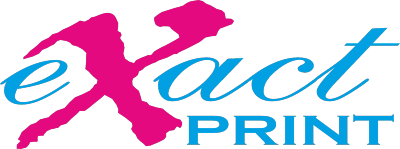Key Considerations Before Designing a Business Brochure for Your Brand

In the age of Internet of Things,
where marketing efforts are often centered around online platforms, one may
wonder if print materials like business brochures still hold relevance.
The answer is a resounding yes! Business brochures remain a powerful tool for
conveying your brand's message, promoting products or services, and creating a
lasting impression on potential customers. A well-designed brochure can be a
valuable asset that complements your online marketing strategies and enhances
your brand's overall visibility.
This article will guide you through the process of designing a custom business brochure that stands out and effectively represents your brand. From planning and content creation to selecting the right printing service in London, we'll cover everything you need to know to create a compelling and professional business brochure.
1. Define Your Objectives
Before diving into the design process, clarify the objectives you want your brochure to achieve. Are you introducing a new product or service, promoting an event, or providing essential information about your company? Understanding your goals will help you craft a focused message and design layout for your brochure.
2. Know Your Target Audience
To create a brochure that resonates with your audience, you must know who they are. Conduct market research to understand your target demographic's preferences, interests, and pain points. This knowledge will guide you in tailoring your content and design to effectively engage and connect with your audience.
3. Craft Compelling Content
The content of your brochure is the heart of your message. Ensure that your content is concise, compelling, and easily digestible. Highlight the unique selling points of your products or services, showcase success stories, and address how your brand solves customers' problems. Use engaging language, eye-catching headlines, and compelling calls-to-action (CTAs) to encourage readers to take the desired action.
4. Plan Your Layout
The layout of your brochure should be visually appealing and easy to follow. Consider the hierarchy of information and use a grid system to organize content. Divide the brochure into sections, and use headings, subheadings, and bullet points to break up the text and make it more readable. Make sure to add the images used in brochure are of high quality and colour context should be relevant to our brand.
5. Professional Design and Branding
Your brochure should reflect your brand's identity and personality. We should use same color, logo context, font in the entire design. A cohesive and professional design helps establish brand recognition and trust with your audience. If you're not proficient in design, consider hiring a professional graphic designer who specializes in creating business brochures.
6. Choose the Right Brochure Format
There are various brochure formats to choose from, such as bi-fold, tri-fold, gatefold, or z-fold. Select a format that best suits the amount of content you want to include and aligns with your brand's style. Tri-fold brochures are a popular choice for their versatility and easy distribution.
7. Incorporate Visual Elements
Visuals are crucial in capturing your audience's attention. Use high-resolution images, graphics, and illustrations that enhance your message. Whatever audience see through our naked eyes connects the content emotionally and helps in building a strong connection. Be mindful of copyright issues when using images, and consider custom illustrations or professional photography to make your brochure truly unique.
8. Provide Clear Contact Information
Ensure that your contact information, including your website, phone number, email address, and physical address, is properly displayed on the brochure. This allows potential customers to reach out to you easily and increases the likelihood of conversions.
9. Include a Call-to-Action (CTA)
Encourage readers to take action after reading your brochure. Whether it's visiting your website, contacting your sales team, or signing up for a newsletter, a clear and compelling CTA guides readers on the next step in their journey with your brand.
10. Proofread Thoroughly
Before sending your brochure for printing, proofread the content meticulously. Typos and grammatical errors can negatively impact your brand's credibility. Have multiple sets of eyes review the brochure to ensure accuracy and clarity.
11. Choose the Right Printing Service
Once your brochure design is ready, it's time to choose a reliable printing service in London i.e., Exact Print. Exact Print specializes in custom brochure printing and has a track record of delivering high-quality results. Read customer reviews and ask for samples to assess the print quality and paper options.
Conclusion
Designing a business brochure
for your brand requires careful planning, compelling content, and professional
design. By defining your objectives, knowing your audience, and crafting
visually appealing content, you can create a brochure that effectively
represents your brand and communicates your message. Selecting the right
brochure format, incorporating visual elements, and providing clear contact
information are essential steps to ensure your brochure stands out.
Finally, choose a reputable printing service in London that can bring your design to life. A well-executed
brochure can become a powerful marketing tool, conveying your brand's value and
leaving a lasting impression on potential customers.
Remember, a beautifully designed
and printed brochure reflects the professionalism and dedication your brand
brings to its products or services. So, take the time to create a brochure that
speaks volumes about your brand's identity and commitment to excellence.
